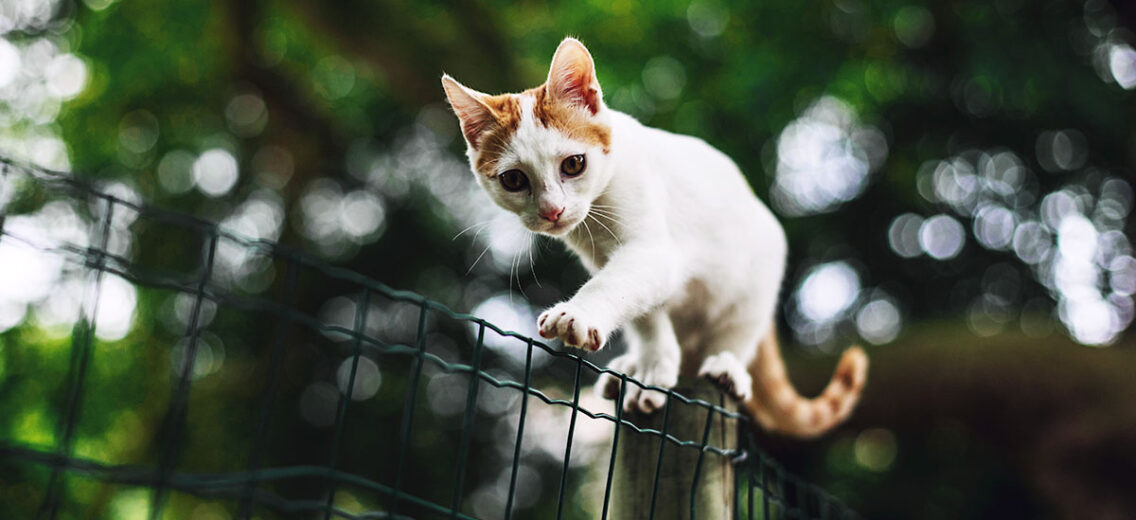“It’s cruel to keep kitty trapped inside. They need to go out and hunt!”
“My cat goes crazy if I try and keep him inside. He totally destroys the house!”
“My cat stays in my yard.” “My cat has his claws; he can defend himself.”
These are just a few of the reasons we hear every day as to why people let their cats go or live outside. But the fact of the matter is, by letting your cat out you are in effect shortening its lifespan. On average, cats that go or live outside have shorter lives than inside cats by as much as ten years. Cats that are allowed to roam often don’t live to see their fifth birthday. Cats that are kept inside average a lifespan of around 15 years.
There are many reasons the outside cats don’t fair as well. Indoor cats are less likely to be exposed to diseases, such as distemper or the nearly always fatal bobcat fever. Outside cats come in contact with more bacteria and infectious fungi. Parasites such as fleas and ticks are far more likely to be found on outdoor cats. And of course, there is the danger of predators. Outside cats may encounter hawks, snakes, skunks, opossum, dogs, or other cats. If the cat is not spayed or neutered the females will almost always become pregnant, and the males will father countless litters of kittens.
So, it is obvious that kitty is safer inside, but can they be content? Of course, they can. First, get your cat spayed or neutered, as it will deter the wanderlust and drive to get outside and find a mate. The vast majority of behavior problems can be addressed simply by having your cat fixed.
Second, give your inside kitty something to do. You’d go stir crazy too if you had nothing to do all day. Cats need interaction. They need to feel the satisfaction of a successful hunt. You can give them this through various methods of play. Toy mice are great for them to bat and toss, while balls in round tracks stimulate response to movement. Dragging a toy on a string gives them something real to chase. Treat dispensing toys can be filled with your cat’s dry food and used as a means for them to “hunt” for their dinner.
Make your home a cat-friendly environment. Give them window perches with bird feeders outside. Give them high shelves from which to watch the household activities. Consider getting them another cat to keep them company. While it is true that cats are more solitary by nature than dogs they still benefit from companionship. Kittens do better in pairs if for no other reason than they wear each other out while you are at work. A single kitten will just sleep until you get home and then want you to stay up all night and play!
While we all feel guilty when we see our cat looking longingly out the window, we have to weigh the consequences of letting them go outside. There are tremendous risks every single time we open that door, both from nature and from humans. If you have a cat that just refuses to be pacified with anything you try to make them happy indoors consider these options:
Making outside cats, happy inside:
Build a “catio.” An enclosure on a patio or in your yard can be a great way to give your cat a safe outdoor playtime. Make sure it is large enough to include different height perches and plenty of scratching surfaces. Always provide fresh water for the outdoor recess, as well as shade as needed.
Harness train your cat. This sounds slightly insane, but it is possible, especially if you start young! A harness on a cable slide will give your cat a sense of freedom, but make sure your feline harness is well-fitted.
Teach your cat to walk on a leash. Again, some people will think this is impossible, but many cats have done quite well learning to explore at the end of a leash.
Designate specific, controlled outdoor playtime for your cat. This means kitty wears a harness, you have control of a long lead, and you control the play activity for the time outside. As a general rule, STAY AWAY FROM TREES!
Having cats is a lot like having kids. They don’t always know or want what is best for them, and it is up to us to make the responsible choices. With a little imagination and work, you can keep your cat inside, safe, engaged, and around for many more years.
Article by Stacey Frazier for Guthrie Pet Hospital

